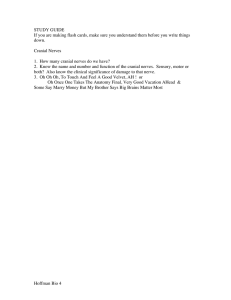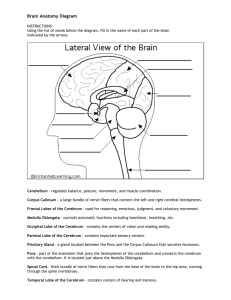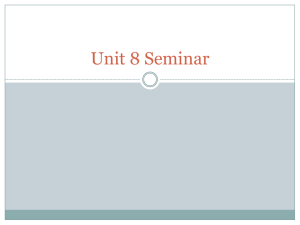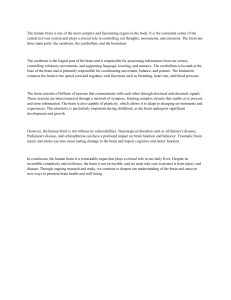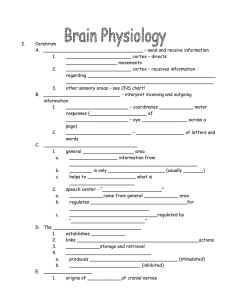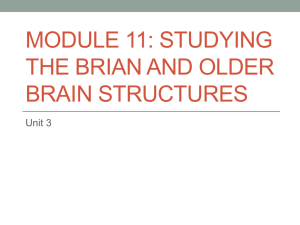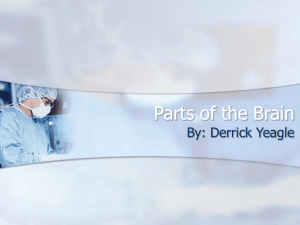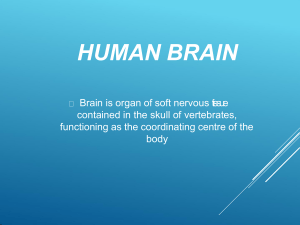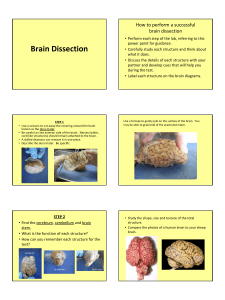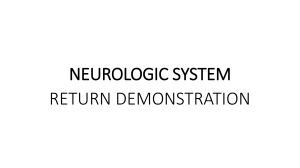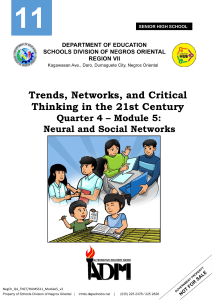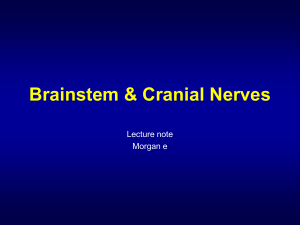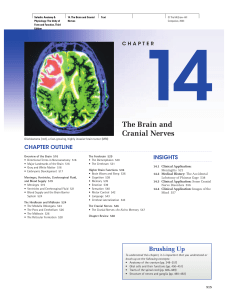I. II. III.
advertisement
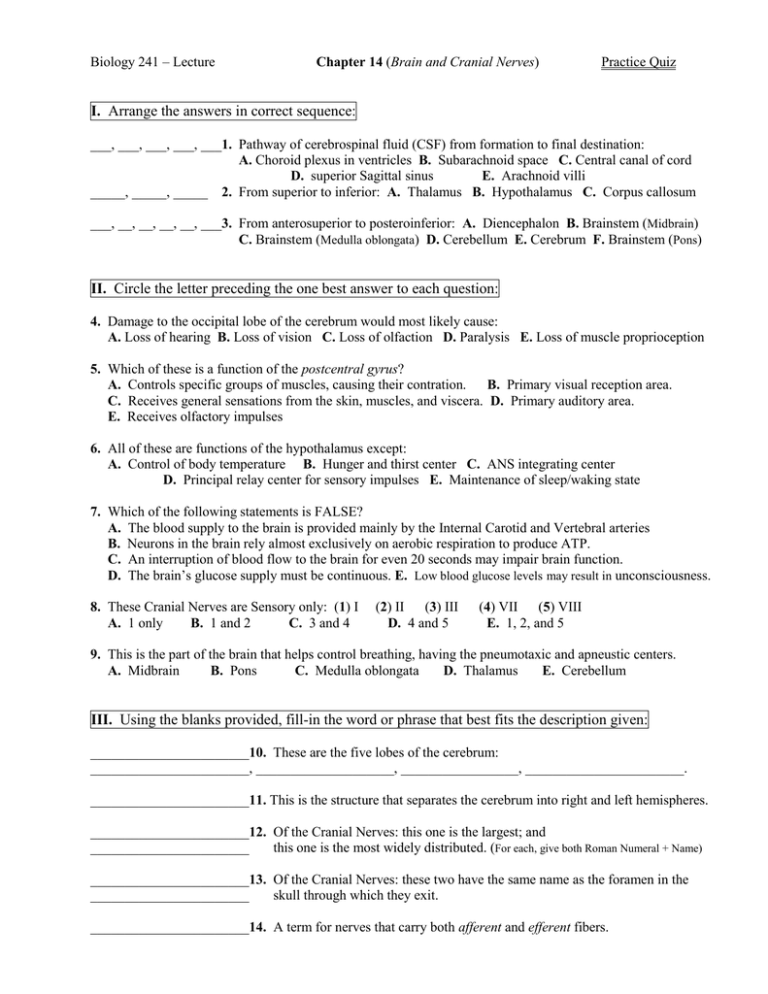
Biology 241 – Lecture Chapter 14 (Brain and Cranial Nerves) Practice Quiz I. Arrange the answers in correct sequence: ___, ___, ___, ___, ___1. Pathway of cerebrospinal fluid (CSF) from formation to final destination: A. Choroid plexus in ventricles B. Subarachnoid space C. Central canal of cord D. superior Sagittal sinus E. Arachnoid villi _____, _____, _____ 2. From superior to inferior: A. Thalamus B. Hypothalamus C. Corpus callosum ___, __, __, __, __, ___3. From anterosuperior to posteroinferior: A. Diencephalon B. Brainstem (Midbrain) C. Brainstem (Medulla oblongata) D. Cerebellum E. Cerebrum F. Brainstem (Pons) II. Circle the letter preceding the one best answer to each question: 4. Damage to the occipital lobe of the cerebrum would most likely cause: A. Loss of hearing B. Loss of vision C. Loss of olfaction D. Paralysis E. Loss of muscle proprioception 5. Which of these is a function of the postcentral gyrus? A. Controls specific groups of muscles, causing their contration. B. Primary visual reception area. C. Receives general sensations from the skin, muscles, and viscera. D. Primary auditory area. E. Receives olfactory impulses 6. All of these are functions of the hypothalamus except: A. Control of body temperature B. Hunger and thirst center C. ANS integrating center D. Principal relay center for sensory impulses E. Maintenance of sleep/waking state 7. Which of the following statements is FALSE? A. The blood supply to the brain is provided mainly by the Internal Carotid and Vertebral arteries B. Neurons in the brain rely almost exclusively on aerobic respiration to produce ATP. C. An interruption of blood flow to the brain for even 20 seconds may impair brain function. D. The brain’s glucose supply must be continuous. E. Low blood glucose levels may result in unconsciousness. 8. These Cranial Nerves are Sensory only: (1) I A. 1 only B. 1 and 2 C. 3 and 4 (2) II (3) III D. 4 and 5 (4) VII (5) VIII E. 1, 2, and 5 9. This is the part of the brain that helps control breathing, having the pneumotaxic and apneustic centers. A. Midbrain B. Pons C. Medulla oblongata D. Thalamus E. Cerebellum III. Using the blanks provided, fill-in the word or phrase that best fits the description given: _______________________10. These are the five lobes of the cerebrum: _______________________, ____________________, _________________, _______________________. _______________________11. This is the structure that separates the cerebrum into right and left hemispheres. _______________________12. Of the Cranial Nerves: this one is the largest; and _______________________ this one is the most widely distributed. (For each, give both Roman Numeral + Name) _______________________13. Of the Cranial Nerves: these two have the same name as the foramen in the _______________________ skull through which they exit. _______________________14. A term for nerves that carry both afferent and efferent fibers.
